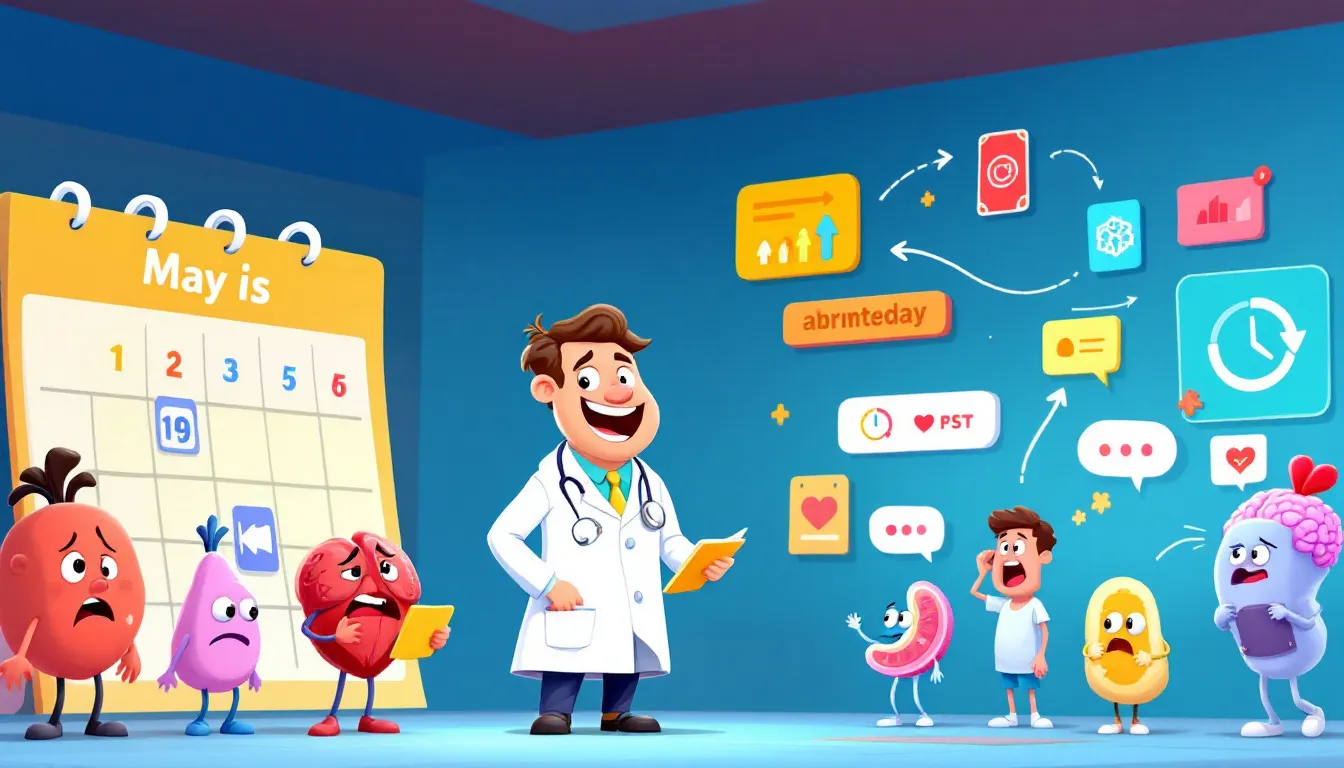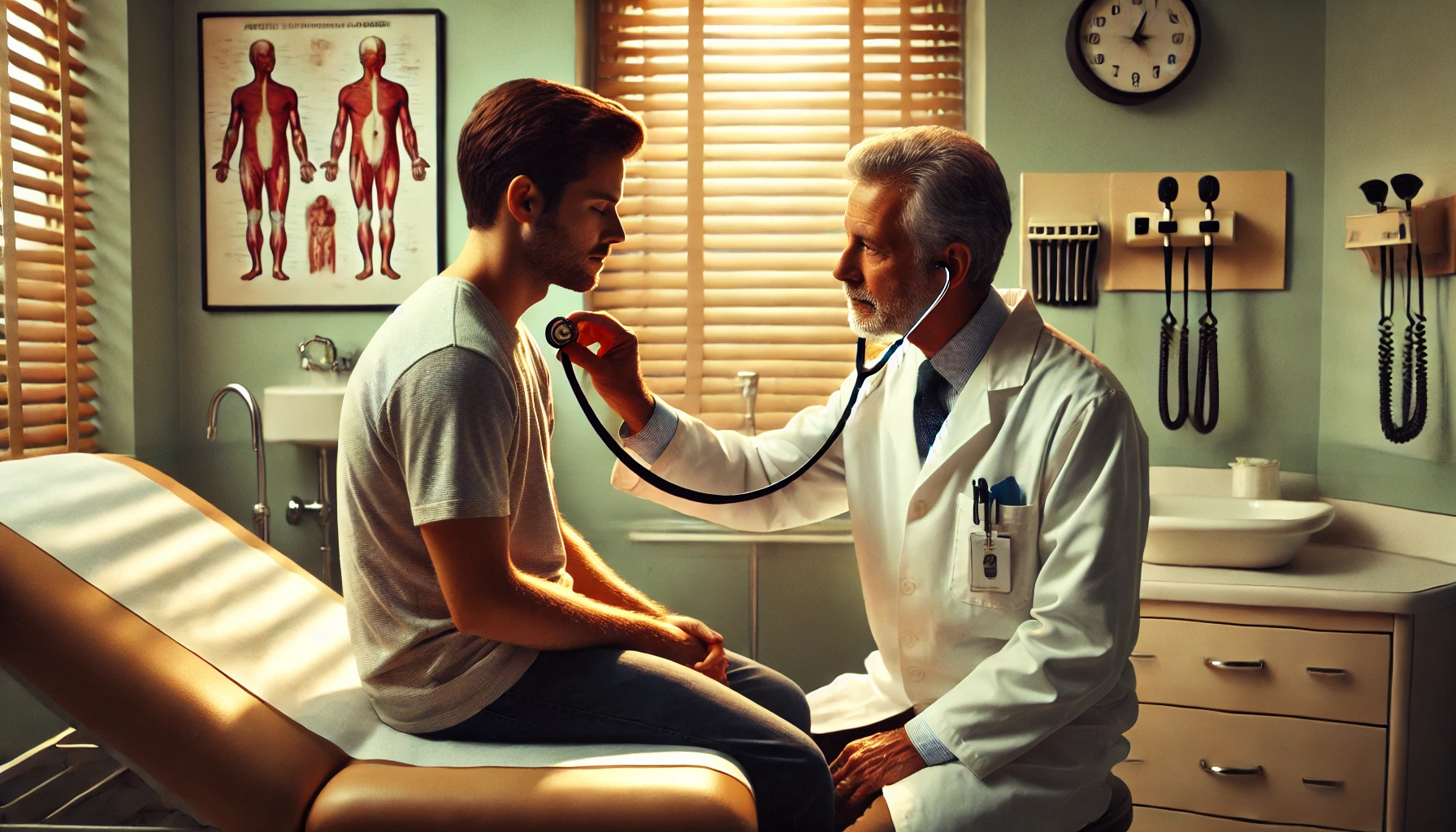- Home
- About Us
- Services
- Primary Care
- Preventative Services
- Transitional Care
- Annual Wellness Exams
- Acute Care Services
- Medical Clearance Examinations
- Chronic Disease Management
- Sports Physicals
- Geriatric Medicine
- Medication Management
- STD & UTI Testing
- Coordination of Care
- Telehealth Services
- Ordering Routine Labs and Scans
- Blog
- Patient Resources
- Contact Us
Understanding your annual checkup is key to managing your health. This article explains what to expect during your visit and the benefits it offers. Learn about the critical screenings and how they detect issues early on.
Key Takeaways
Annual checkups are crucial for preventive care, helping detect health issues early and manage overall well-being.
During your exam, expect a thorough health history update, vital signs measurement, and a full physical examination, all tailored to your individual needs.
Most insurance plans cover annual physicals, allowing for easy access to vital health services without significant expense.
The Importance of an Annual Checkup
Annual physical exams benefit everyone, not just those feeling unwell, as they help maintain good health. These exams provide preventive health care, helping to identify potential health issues before they become serious problems. Regular checkups help maintain health and catch potential issues early, even if you feel perfectly healthy. This proactive approach can lead to early disease detection, significantly improving health outcomes and potentially saving lives.
During your annual exam, your healthcare provider will conduct preventive screenings and offer health recommendations tailored to your individual needs. This personalized care is especially important as we age, with recommendations suggesting an annual physical exam at least after age 40 and every two years for those in their 20s and 30s. Consistent checkups help create a comprehensive health history, aiding in better overall health management.
Moreover, annual checkups are an excellent opportunity to build a strong relationship with your primary care provider. Regular interactions during these exams allow your provider to understand your health concerns and goals more deeply, leading to more effective and personalized health management.
Think of your annual checkup as preventive care that keeps you engaged in your health journey, addressing concerns before they escalate.
Who Performs Your Annual Physical Exam?
When it comes to your annual physical exam, you’re in good hands. These essential health evaluations are conducted by primary care providers, including a family medicine physician, physician assistants, and nurse practitioners. These healthcare providers are trained to perform comprehensive physical exams, ensuring thorough and attentive care.
Your primary care provider, whether a doctor, a physician’s assistant, or a nurse practitioner, will perform the annual physical exam, addressing your health concerns and conducting various health screenings. This diverse team of healthcare providers at Trinity Family Practice is dedicated to offering annual exams that cover all aspects of your health, from head and neck exams to more specific screenings like pelvic exam and testicular exams.
What Happens During Your Annual Physical Exam
Knowing what happens during your annual physical exam can ease apprehensions and help you prepare. This crucial part of any doctor’s visit encompasses a range of assessments designed to give a comprehensive view of your health. A typical yearly checkup includes a discussion of your recent health history, measurement of vital signs, and a thorough physical examination.
Let’s break down these components into more detail. The process starts with a health history update, discussing changes in your health, lifestyle habits, and family medical history since your last visit.
Next, vital signs like blood pressure and heart rate are measured. Finally, a head-to-toe physical examination checks for abnormalities and addresses health concerns.
Health History Update
Updating your health history is a key part of the annual physical exam. Upon arrival, patients update their health histories, noting changes in health, family history, and personal concerns. A medical assistant will help update your complete personal information and medical history during the annual checkup. During this phase, your provider will review lifestyle habits, family medical history, recent vaccinations, and any updates since your last visit.
Be honest with your provider about lifestyle changes and health concerns. Discuss substance use openly, as your provider is there to help, not judge. Providing detailed information about your family medical history, such as genetic predispositions to conditions like high cholesterol or cancer, is also crucial.
This review helps your provider assess your health and tailor recommendations.
Vital Signs Measurement
Measuring vital signs is a fundamental part of the annual exam, providing a snapshot of your health. During your checkup, vital signs such as blood pressure, heart rate, respiration rate, and temperature are typically measured. Oxygen saturation might also be evaluated to ensure your body is receiving enough oxygen.
Additionally, a medical assistant will gather basic health data, including your height and weight, to create a comprehensive overview of your health status. These measurements help identify underlying health issues and guide subsequent management steps.
Physical Examination
The physical examination is a thorough head-to-toe assessment of your health. It involves checking components such as skin, heart, lungs, abdomen, and limbs. Your provider assesses health risks through inquiries about lifestyle habits, BMI calculations, and physical observations. This comprehensive evaluation helps identify any potential health issues that may require further attention.
If health issues are identified, your provider may order blood tests, recommend treatments, or discuss findings with you. This ensures that any health problems are addressed promptly, and appropriate steps are taken to manage your health effectively.
Your provider will guide you through follow-ups or additional screenings to maintain your well-being.
Important Screenings and Tests

Screenings and tests during your annual exam play a crucial role in assessing your health. These include blood tests, cancer screenings, and mental health evaluations. Monitoring trends in vital signs over time helps identify potential health issues and ensure timely intervention. These screenings not only help in early disease detection but also provide a clear picture of your overall health.
Your annual checkup provides services like health screenings, chronic disease management, and mental health assessments. Here are some key screenings and tests typically part of an annual physical.
Blood Tests
Blood tests are a common component of the annual exam, providing valuable health insights. These tests may assess cholesterol levels, blood glucose, and organ function. A complete blood count (CBC) evaluates the levels of red and white blood cells, hemoglobin, and platelets to assess your overall health. Additionally, a comprehensive metabolic panel (CMP) provides insights into kidney and liver function, as well as electrolyte balance.
For those at risk of diabetes, Hemoglobin A1C tests identify blood sugar issues based on historical levels. Lipid panels measure different types of cholesterol and triglycerides to evaluate cardiovascular health.
Fasting for about eight hours prior to your appointment is often recommended for accurate blood test results. These tests are essential for early disease detection and tracking health status.
Cancer Screenings
Cancer screenings are a critical part of the annual exam, aimed at early detection and improved treatment outcomes. Breast cancer screening typically begins at age 40, with recommendations varying based on individual risk factors. Women may also undergo pelvic exams or Pap tests for early detection of cervical cancer. These screenings identify potential issues before they become serious.
For men, cancer screenings often include tests for prostate issues and testicular cancer, typically starting at age 50. Early detection through these screenings can significantly improve treatment success rates and health outcomes. Including these screenings in your annual checkup is a proactive step in monitoring and maintaining your health.
Depression Screening
Mental health is as important as physical health, and depression screenings are a valuable part of the annual exam. These screenings include questions about mood, sleep patterns, and energy levels, providing insights into your emotional well-being.
Healthcare providers may use standardized questionnaires to assess your mood and lifestyle habits, identifying signs of depression. Addressing mental health during physical exams ensures a holistic approach to your well-being.
How to Prepare for Your Annual Checkup

Preparation is key to making the most of your annual exam. Create a written list of questions or health concerns to discuss during your visit. This ensures that no important issues are overlooked. Also, compile a list of all current medications, including dosages and over-the-counter drugs, to bring to your checkup. This information helps your provider understand your current treatment regimen and make any necessary adjustments.
It’s also important to update your provider on your vaccination status and discuss any lifestyle behaviors that may impact your health. Being well-prepared for your annual checkup not only makes the visit more efficient but also ensures you receive comprehensive care tailored to your needs.
Benefits of Regular Annual Exams

Regular annual exams offer numerous benefits, from early disease detection to fostering a strong relationship with your healthcare provider. These exams can reveal health issues that may not present symptoms, enabling early diagnosis and treatment. Scheduling an annual wellness exam helps in the prevention and management of chronic diseases, ensuring appropriate care and timely interventions.
Moreover, regular visits to your primary care physician allow for open discussions about your health goals and concerns, promoting better health outcomes. Providers offer tailored advice based on the results of annual health exams, guiding lifestyle changes that enhance your overall well-being.
Ultimately, individuals who attend annual check-ups often report improvements in both physical and mental health.
Cost and Insurance Coverage
Financial considerations are an important aspect of healthcare. Most insurance plans cover annual physicals, often at no cost to the patient. This makes it easier for individuals to access preventive care services without worrying about significant expenses. For those without insurance, the cost of an annual physical can range between $50 and $200, with the average cost being approximately $199.
Some states offer assistance in determining out-of-pocket expenses for healthcare services, especially for low-income individuals. Additionally, certain hospitals or the insurance marketplace may provide discounts or free services for those who qualify. Medicaid may also cover annual exams with nominal out-of-pocket costs, which vary by state and income level.
Understanding your coverage options helps you plan for and prioritize your annual checkup.
In Conclusion
In summary, annual checkups are a vital part of maintaining your overall health. They offer preventive care, early disease detection, and personalized health management, even if you feel perfectly healthy. Regular exams help build a strong relationship with your primary care provider, allowing for open discussions about your health goals and concerns. From measuring vital signs to conducting important screenings and tests, these checkups provide a comprehensive view of your health.
Take the first step towards proactive health management by scheduling your annual physical exam at Trinity Family Practice. By staying committed to regular checkups, you can ensure better health outcomes and a higher quality of life. Remember, your health is your most valuable asset—invest in it wisely.
Ready to take a proactive step towards better health?
Schedule your annual physical exam at Trinity Family Practice today. You can book an appointment conveniently online or by calling our office at (725) 331-2299.
Our dedicated team operates Monday through Friday, from 9 AM to 5 PM, ensuring you receive the comprehensive care you deserve.
Don’t wait—take charge of your health now!
Frequently Asked Questions
Why are annual checkups important even if I feel healthy?
Annual checkups are essential because they can catch potential health issues early and help you stay actively involved in your well-being, even when you feel fine. It’s all about staying proactive rather than reactive!
Who can perform my annual physical exam?
For your annual physical exam, you can see a primary care provider like a doctor, physician assistant, or nurse practitioner. They’re all qualified to help keep you healthy!
What should I bring to my annual checkup?
Make sure to bring a list of your current medications and any health questions you have. This will help you get the most out of your annual checkup!
Are blood tests always part of the annual checkup?
Blood tests are typically part of your annual checkup because they give valuable information about cholesterol, glucose levels, and overall organ health. So, it’s a good idea to expect them during your visit!
How much does an annual checkup cost without insurance?
An annual checkup without insurance typically costs between $50 and $200, averaging around $199. So, it’s definitely something to budget for if you don’t have coverage!
POST TAGS :
SHARE :
Trinity Family Practice is dedicated to offering personalized, compassionate healthcare for individuals and families in Las Vegas, with a focus on quality care you can trust at every visit.
Address
Contact
+1 (725) 331-2299



